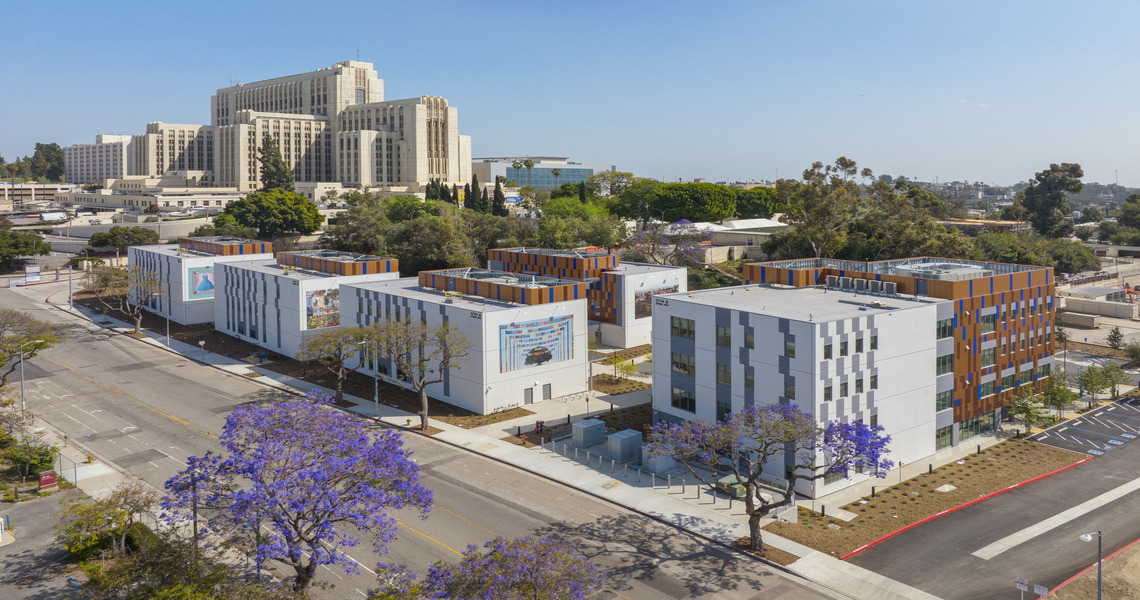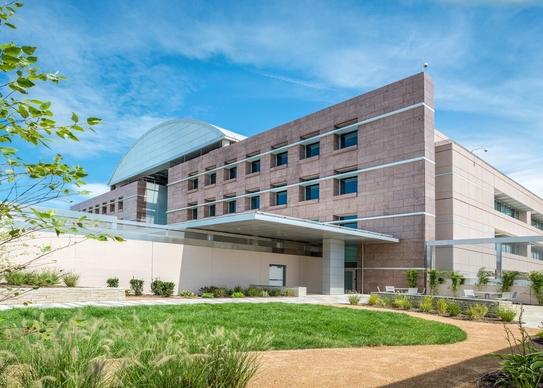The RCV is a critical part of Los Angeles County’s efforts to address the health, safety, and support needs of individuals experiencing a broad and interrelated range of issues that impact their well-being, including mental illness, substance use disorders, homelessness and medical comorbidities. The project has been previously profiled by the Wall Street Journal and Next City as an exciting novel approach.
The RCV neighborhood model creates a safe and nurturing community with an abundance of resources for a population who struggles with access to basic needs. Located on the LAC+USC campus, the RCV consists of a four-story Recuperative Care Center that provides stable housing for those recently discharged from the hospital, as well as four Residential Treatment Program (RTP) buildings that act as a short-term alternative to hospitalization for mental health and other social service needs.

“This project shines as a community asset,” said David Hunt, our Southern California Health Practice Leader. “Courtyard areas welcome the community in, and it helps residents feel a sense of connectedness. It’s not a stigmatized place, it’s a place to where individuals can begin to reintegrate with their community and daily, healthy lives.”
The Recuperative Care Center has 96 beds to provide immediate placement options for individuals discharged from an inpatient hospital who lack a supportive place to live. This form of interim housing with clinical oversight will also offer on-site administrative support, case management and links to permanent supportive housing.

The RTPs, which feature 16 beds in each building for a total of 64 beds, will include intensive treatment programs and supportive services for individuals being discharged from County hospital psychiatric emergency services, inpatient psychiatric units, and mental health urgent care centers.
The campus has open courtyards with areas for private respite as well as social gatherings. Providing freedom and choice for the residents to go where they need to for rest or socialization was important. Art commissioned by local artists adorns the exterior and adds to the rich heritage of the surrounding neighborhood.

We are proud to have helped Los Angeles County shape this breakthrough holistic approach to help individuals, families, and communities in need throughout the region, ensuring that they can access the health and supportive services resources they need and deserve. Congratulations to the County of Los Angeles on this bold step forward.




